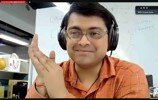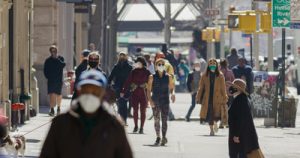-Course Group: Leadership, followership and Consensus Building
-Course Name: TAL.W502-02 Fundamental Group Work for Leadership I (F)
-Program Name: 3-day workshop of “Design Thinking for Your Creative Practice”
-Facilitators: Thomas Both and David Janka (d.school, Stanford Univ.), Scott Witthoft (The University of Texas at Austin)
-Date & Time: Day 1: 15/Oct/2022 08:30-13:00, Day 2: 22/Oct/2022 08:30-13:00, Day3: 23/Oct/2022 08:30-13:00, online.
“Design can help to improve our lives in the present. Design thinking can help us chart a path into the future.”
— Tim Brown (CEO and the president of IDEO)
Tim Brown’s statement aptly summarizes the benefits of this workshop and the results it yields. For those who are unaware, Tim Brown is the president and CEO of IDEO. IDEO is a design consultancy whose goal is to use design to develop creative solutions to problems and to improve the lives of people.
My name is Vinayak GUPTA (Mr.) and I am a second-year doctoral student (as of November 1, 2022) in the Department of Transdisciplinary Science and Engineering at Tokyo Tech. As I jot down my experiences and the outcomes from the Design Thinking workshop, I hope that I strike a fair balance between not revealing much of the secret activities (so that you don’t miss the fun and the surprise when you join the workshop) while convincing you that this workshop is one of the best things that you might come across in your improvement journey.
Beginning with my motivation for attending the workshop. A big reason for attending the workshop is the profile of the tutors. As mentioned (or will be mentioned to you when the time comes), the tutors are from the University of Texas and Stanford University. I attended this workshop because I always wanted to take a course at Stanford University, and so I signed up for it. The tutors are Americans. I would say that their teaching style is a lot different from the professors here, and this point, I believe, should be the main reason for the Japanese students to attend this workshop. You will get to experience a new way of learning things, a fun way of learning things. Additionally, you will get to know many foreign students in the workshop. It is okay if English is not your first language, English is not my first language either, but some courage to sign up for this workshop will be very beneficial for your personality. Design thinking is not just limited to engineering. I think design thinking is a way of life. It is a way that will be in great demand in the future. When we graduate, to put it bluntly, companies not only focus on our degree but also be looking for critical thinking and problem-solving skills. Not only for the purpose of job hunting, but even in life, I strongly believe that creativity, innovation, communication, and collaboration are the essential skills that you need in life and that you will be practising in this workshop. In the contemporary world, design thinking has become increasingly significant. Understanding the benefits of collaboration and feedback, being able to see challenges and reframe them as opportunities for action, and, most significantly, perceiving failures and setbacks as instructive experiences are all made possible by design thinking. In the following lines, I shall shed light on what we did in the workshop and my learnings from it.
Day 1 (and pre-day 1)
We were asked to get familiar with Mural, the workshop’s virtual whiteboard. We were asked to create and post our avatars on the Mural grid. I was keen to observe the students’ genuine enthusiasm for the workshop. Everyone’s avatar was a kind of representation of themselves. Even I tried my best to present the most accurate avatar of myself. On the main day, three key design concepts — design thinking, process, and design skills and methods — were introduced. The quick introduction focuses on how designers might establish unique sequences or tactics to create, iterate, and keep people in mind.
Scott-sensei then provided us with advice on visual communication after the briefing, and we practised sketching. The details we put in our drawings must be balanced. We sketched many representations of a person. Once you start drawing, you will be amazed at what you can do and produce once you let your mind free. Later, we chose one of our favourites from all the things we had drawn and practised other renditions of the same version. Sometimes it is okay to draw without going into detail and just let the creative ideas flow. My first “aha!” moment was when the tutors played the music during the breaks. The simple gesture of playing music during the break kept the curiosity and interest of the students intact.

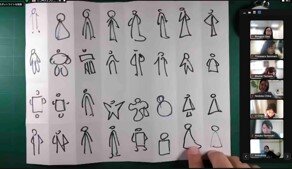
We started by thinking about our own interests and fascinations with our classmates in the Zoom breakout room before moving on to the next job of the day, which was to explore how we each can come up with fresh ideas. Our interests could be in everything, including people, objects, ideas, events, subcultures, and activities. Funnily enough, we were (or maybe just I was) happy just talking about our fascination. We chose one of our interests and made a print advertisement including bananas. We also had to come up with a catchy phrase. We had 20 minutes to snap a picture of our artistic attempt and post it online. I was astounded by the quantity of work that everyone produced, and this activity was enjoyable. It’s fascinating to observe how a single concept may be translated into a visual product. Here, the class of students was divided into three groups, each headed by a tutor. David Sensei presided over my group. I am thankful that David-sensei appreciated my sense of humour and saw positivity in my assignment. Well, later, I got personalised messages from other classmates saying that they found my idea funny yet unique. I felt that it gave a boost to my confidence and somewhere I realised that it is okay to take risks in this workshop which many Japanese students refrain from (thanks to David-sensei for his constant support though).
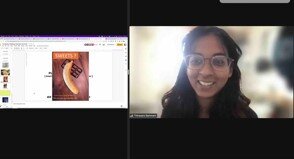
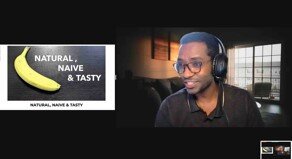
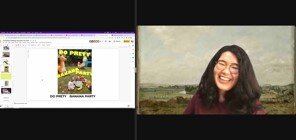
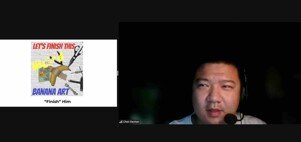
The art of noticing and a routine of keeping a notebook were introduced to us next. This attempted to improve our capacity for observation and interpretation. A fieldwork task was provided to us. Through two frameworks, we practiced observation. The What, How, and Why framework is one framework, and the AEIOU framework is another framework that includes activities, environments, interactions, objects, and users. Additionally, we had to interpret our observations by elaborating on the person’s actions, their method of execution, or their motivations. We were given a practice worksheet, and were instructed to make notes, make sketches, and record the time. For one day, the entire fieldwork took between 40 and 80 minutes. But when it was rationally organized and documented as a work, I learned more and developed more caution while paying close attention. There were a few remarkably unexpected details that I noticed. I shall discuss those under Day 2.
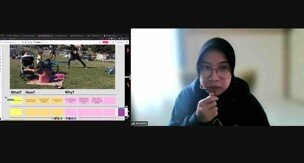
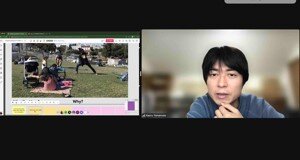
Day 2
Day 2 started with some super cute activities by Thomas-sensei. We were asked to be fast, on our toes, and get physical stuff around us that gives us comfort and stuff that increases our curiosity. It is a lot of fun to see what relaxes other students and what piques their interest. I am pretty sure that this activity woke many students up, and yes, they got back to the interesting workshop.
Scott-sensei then took over the meeting to carry on the first day’s drawing exercise. He introduced two typical shapes–a circle and a square–to demonstrate the straightforward process of sketching things. He showed us that the majority of objects, including windows, houses, planets, and so forth, can be drawn using circles and squares by expanding them into 3D (i.e., cylinder and cube) and adding contrasting lines to convey emphasis. The best part was adding volume to the simple shapes; this was a wow moment. Just a simple realisation that a marker (thick nib) and a pen (thin nib) can change the meaning of your figures, add volume to them and make your figures more appealing. I wanted to practice more of those. Drawing is a useful ability in design thinking since it allows one to materialize an abstract concept (an idea) into a depiction, as was also mentioned in the workshop’s introduction on Day 1. While going through the activity, I seriously wished that the education boards in the countries should (and must) introduce this day 2 sketching activity in their curriculum. This is a simple concept, yet a profound and basic concept that an artist should know. This concept should be taught in the introductory classes of the drawing/ art and craft modules in schools.
We then discussed our last week’s task on practising “noticing”. I chose a children’s park for the activity. I tried to do my work with a twist. Anyone can guess that there would be children playing in the children’s park. But I went to the park at unusual times. I did the fieldwork on two days, one on the weekend and the other on a weekday, both around 8:30 pm, to see the contrast between human activities and carrying acts. People’s activities are highly dependent on the day. You might see gloomy people returning from their offices on a weekday evening to smoke or to want some alone time. On the weekends, however, people like to be childish and were swinging when they thought no one was looking (I was watching them from behind a shrub, hehe). Also, we were supposed to observe the people for a span of 40 to 60 minutes. I observed that the way they carry their bags tells a lot about the time they will be spending at a place. For example, if a person keeps his or her bag attached to his or her body, it appeared that they were in a rush and left the park in 10 to 20 minutes. People who just carelessly put their bags beside them (without clinging to them) spend about 40 minutes or even more than an hour in the park.
After the preceding exercise, Scott-sensei demonstrated various methods to make sense of our observations. We experimented with typologies, spectrum mapping, and opportunity statements, three popular synthesis techniques. Before the Day 2 session ended, David-sensei involved us in some activities to think uninhibitedly. For example, he just asked us in what ways a paper plate can be used. The responses from the students were very vivid and unique. He then presented radical ideation, a discipline that is essential to design thinking. The idea distinguishes between generative and selective ideation. It might not be easy to get at once. It discusses the process of developing an idea from scratch: coming up with ideas should first involve coming up with hundreds of good ones before concentrating on a few that are worth pursuing. On the day, we learned about and practised some ideation techniques like mind mapping, crowdsourcing, and brainstorming.
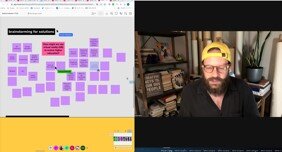
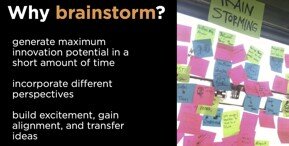
Day 3
Sadly, on day 2, I got my fourth vaccination. And so, on day 3, I was having side-effects of the vaccination and was feverish. Such was the charm of this workshop that I still want to sit in and participate as much as I can. The main topic of day 3 was “framing and re-framing challenges.” In the first mini-discussion, Mr. Doug Dietz, an industrial designer, was introduced through a TED talk. Dietz was entrusted with improving how sick children perceive the MRI procedure (Magnetic Resonance Imaging). In order to divert the kids’ attention from what would normally be a frightening medical process, he re-envisioned the MRI machine as an adventurous experience. However, Mr. Dietz did not take this suggestion lightly. To come up with this concept and see it through to completion, Mr. Dietz underwent a protracted design process. Based on this illustration, two important concepts–prototyping and brainstorming–and associated methods for re-framing problems were taught to us.
We discussed the Why – How ladder making after watching a promotional video of Kobe Shimbun. Here, you start with a single problem statement and answer the why as you move up and the how as you move down. As you go further into the issue, branches start to show up, and you learn more about the connections between the problems. This method enables you to comprehend a problem’s abstract (going up with Why) and concrete (going down with How) aspects while taking into consideration their interrelationships with arrows and branches. There were many ladders. When we were working on making our ladder, I noticed that all three cursors–David-sensei, Scott-sensei and Thomas-sensei–were hovering around our work (in the Mural workspace, you can see who is peeking at your work). Later, the tutors mentioned that our work was “out of the-box, and they then discussed it in class. It feels good when you try something, take a risk, and then become an example for others.
Next, we studied design prototyping, a technique for exploring ideas or for putting your thoughts into visual form. Additionally, the exercises we completed made it abundantly clear that creativity grows from constraints. By limiting our imaginations to the restricted crafting supplies at hand, we were able to broaden our understanding of the issue. In our exercise, we were paired with another student to discuss how a family with two young children who have specific nutritional needs may manage a power outage brought on by a natural disaster. However, the design challenge was unrestricted.
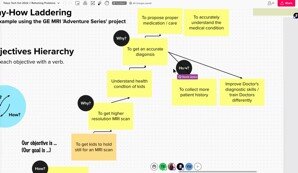
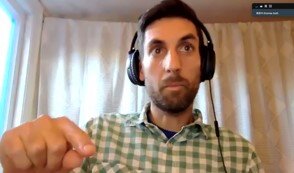
I would want to conclude this Day 3 reflection by saying that this was a special learning opportunity that I could suggest to anyone. In the end, the class wrote in each box the things that students would tell a friend before enrolling in this course themselves, and so we happily concluded this workshop with a fun activity.
Ending note: I wish I had found this workshop two years earlier. I say this because I took part in the NUS Resilience and Growth (R&G) Innovation Challenge with a team at my previous university, the National University of Singapore. Though we won and the team was awarded funding to create a low-cost, environmentally friendly toilet, I believe that if I had known about this training beforehand, I could have accomplished more for my start-up. Having said that, I have to agree that learning new talents in life can never be too late. I am now eager to use the newly learnt design thinking techniques in my PhD research. Since I am in the Department of Transdisciplinary Science and Engineering, my doctoral thesis represents a confluence of multiple engineering topics. As a part of the doctoral thesis, I am working in the fields of environmental engineering (sewage engineering and recycling), life cycle analysis, techno-economic analysis, and socio-psychological aspects that affect how people make decisions. I am now excited to use the skills in my academics and everyday life.
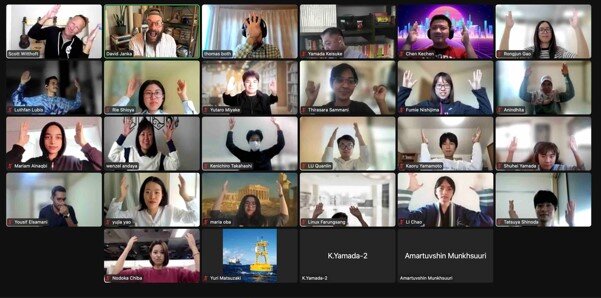
(Reported by Vinayak Gupta, Department of Transdisciplinary Science and Engineering, Tokyo Tech)
